The Cell Cycle
Games
Games
No matter where you live, you have probably noticed that the weather changes in a regular pattern each year. Some areas experience four seasons—winter, spring, summer, and fall. In other parts of the world, there are only two seasons—rainy and dry. As seasons change, temperature, precipitation, and the number of hours of sunlight vary in a regular cycle.
These changes can affect the life cycles of organisms such as trees. Notice how the tree in Figure 1 changes with the seasons. Like changing seasons or the growth of trees, cells go through cycles. Most cells in an organism go through a cycle of growth, development, and division called the cell cycle. Through the cell cycle, organisms grow, develop, replace old or damaged cells, and produce new cells.
Figure 1 This maple tree changes in response to a seasonal cycle.
 Visual Check List the seasonal changes of this maple tree.
Visual Check List the seasonal changes of this maple tree.
Phases of the Cell Cycle
There are two main phases in the cell cycle—interphase and the mitotic (mi TAH tihk) phase. Interphase is the period during the cell cycle of a cell’s growth and development. A cell spends most of its life in interphase, as shown in Figure 2. During interphase, most cells go through three stages:
• rapid growth and replication, or copying, of the membrane-bound structures called organelles;
• copying of DNA, the genetic information in a cell; and
• preparation for cell division.
Interphase is followed by a shorter period of the cell cycle known as the mitotic phase. A cell reproduces during this phase. The mitotic phase has two stages, as illustrated in Figure 2. The nucleus divides in the first stage, and the cell’s fluid, called the cytoplasm, divides in the second stage. The mitotic phase creates two new identical cells. At the end of this phase, the original cell no longer exists.
1. Key Concept Check What are the two main phases of the cell cycle?
Figure 2 A cell spends most of its life growing and developing during interphase.
 Visual Check Which stage of interphase is the longest?
Visual Check Which stage of interphase is the longest?
Length of a Cell Cycle
The time it takes a cell to complete the cell cycle depends on the type of cell that is dividing. Recall that a eukaryotic cell has membrane-bound organelles, including a nucleus. For some eukaryotic cells, the cell cycle might last only eight minutes. For other cells, the cycle might take as long as one year. Most dividing human cells normally complete the cell cycle in about 24 hours. As illustrated in Figure 3, the cells of some organisms divide very quickly.
Figure 3 The fertilized egg of a zebra fish divides into 256 cells in 2.5 hours.
REVIEW VOCABULARY
eukaryotic
a cell with membrane-bound structures
a cell with membrane-bound structures
Interphase
As you have read, interphase makes up most of the cell cycle. Newly produced cells begin interphase with a period of rapid growth—the cell gets bigger. This is followed by cellular activities such as making proteins. Next, actively dividing cells make copies of their DNA and prepare for cell division. During interphase, the DNA is called chromatin (KROH muh tun). Chromatin is long, thin strands of DNA, as shown in Figure 4. When scientists dye a cell in interphase, the nucleus looks like a plate of spaghetti. This is because the nucleus contains many strands of chromatin tangled together.
Figure 4 During interphase, the nuclei of an animal cell and a plant cell contain long, thin strands of DNA called chromatin.
Phases of Interphase
Scientists divide interphase into three stages, as shown in Table 1. Interphase begins with a period of rapid growth—the G1 stage. This stage lasts longer than other stages of the cell cycle. During G1, a cell grows and carries out its normal cell functions. For example, during G1, cells that line your stomach make enzymes that help digest your food. Although most cells continue the cell cycle, some cells stop the cell cycle at this point. For example, mature nerve cells in your brain remain in G1 and do not divide again.
During the second stage of interphase—the S stage—a cell continues to grow and copies its DNA. There are now identical strands of DNA. These identical strands of DNA ensure that each new cell gets a copy of the original cell’s genetic information. Each strand of DNA coils up and forms a chromosome. Identical chromosomes join together. The cell’s DNA is now arranged as pairs of identical chromosomes. Each pair is called a duplicated chromosome. Two identical chromosomes, called sister chromatids, make up a duplicated chromosome, as shown in Figure 5. Notice that the sister chromatids are held together by a structure called the centromere.
The final stage of interphase—the G2 stage—is another period of growth and the final preparation for the mitotic phase. A cell uses energy copying DNA during the S stage. During G2, the cell stores energy that will be used during the mitotic phase of the cell cycle.
1.  Reading Check Describe what happens in the G2 phase.
Reading Check Describe what happens in the G2 phase.
 Reading Check Describe what happens in the G2 phase.
Reading Check Describe what happens in the G2 phase.
Figure 5 The coiled DNA forms a duplicated chromosome made of two sister chromatids connected at the centromere.
Organelle Replication
During cell division, the organelles in a cell are distributed between the two new cells. Before a cell divides, it makes a copy of each organelle. This enables the two new cells to function properly. Some organelles, such as the energy-processing mitochondria and chloroplasts, have their own DNA. These organelles can make copies of themselves on their own, as shown in Figure 6. A cell produces other organelles from materials such as proteins and lipids. A cell makes these materials using the information contained in the DNA inside the nucleus. Organelles are copied during all stages of interphase.
The Mitotic Phase
The mitotic phase of the cell cycle follows interphase. It consists of two stages: mitosis (mi TOH sus) and cytokinesis (si toh kuh NEE sus). In mitosis, the nucleus and its contents divide. In cytokinesis, the cytoplasm and its contents divide. Daughter cells are the two new cells that result from mitosis and cytokinesis.
During mitosis, the contents of the nucleus divide, forming two identical nuclei. The sister chromatids of the duplicated chromosomes separate from each other. This gives each daughter cell the same genetic information. For example, a cell that has ten duplicated chromosomes actually has 20 chromatids. When the cell divides, each daughter cell will have ten different chromatids.
Chromatids are now called chromosomes.
In cytokinesis, the cytoplasm divides and forms the two new daughter cells. Organelles that were made during interphase are divided between the daughter cells.
Phases of Mitosis
Like interphase, mitosis is a continuous process that scientists divide into different phases, as shown in Figure 7.
Prophase During the first phase of mitosis, called prophase, the copied chromatin coils together tightly. The coils form visible duplicated chromosomes. The nucleolus disappears, and the nuclear membrane breaks down. Structures called spindle fibers form in the cytoplasm.
Metaphase During metaphase, the spindle fibers pull and push the duplicated chromosomes to the middle of the cell. Notice in Figure 7 that the chromosomes line up along the middle of the cell. This arrangement ensures that each new cell will receive one copy of each chromosome. Metaphase is the shortest phase in mitosis, but it must be completed successfully for the new cells to be identical.
Anaphase In anaphase, the third stage of mitosis, the two sister chromatids in each chromosome separate from each other. The spindle fibers pull them in opposite directions. Once separated, the chromatids are now two identical single-stranded chromosomes. As they move to opposite sides of a cell, the cell begins to get longer. Anaphase is complete when the two identical sets of chromosomes are at opposite ends of a cell.
Telophase During telophase, the spindle fibers begin to disappear. Also, the chromosomes begin to uncoil. A nuclear membrane forms around each set of chromosomes at either end of the cell. This forms two new identical nuclei. Telophase is the final stage of mitosis. It is often described as the reverse of prophase because many of the processes that occur during prophase are reversed during telophase.
1.  Reading Check What are the phases of mitosis?
Reading Check What are the phases of mitosis?
 Reading Check What are the phases of mitosis?
Reading Check What are the phases of mitosis?
Figure 7 Mitosis begins when replicated chromatin coils together and ends when two identical nuclei are formed.
Dividing the Cell’s Components
Following the last phase of mitosis, a cell’s cytoplasm divides in a process called cytokinesis. The specific steps of cytokinesis differ depending on the type of cell that is dividing. In animal cells, the cell membrane contracts, or squeezes together, around the middle of the cell. Fibers around the center of the cell pull together. This forms a crease, called a furrow, in the middle of the cell. The furrow gets deeper and deeper until the cell membrane comes together and divides the cell. An animal cell undergoing cytokinesis is shown in Figure 8.
Cytokinesis in plants happens in a different way. As shown in Figure 8, a new cell wall forms in the middle of a plant cell. First, organelles called vesicles join together to form a membrane-bound disk called a cell plate. Then the cell plate grows outward toward the cell wall until two new cells form.
2.  Reading Check Compare cytokinesis in plant and animal cells.
Reading Check Compare cytokinesis in plant and animal cells.
 Reading Check Compare cytokinesis in plant and animal cells.
Reading Check Compare cytokinesis in plant and animal cells.
Figure 8 Cytokinesis differs in animal cells and plant cells.
WORD ORIGIN
mitosis
from Greek mitos, means “warp thread”; and Latin –osis, means “process”
from Greek mitos, means “warp thread”; and Latin –osis, means “process”
Math Skills: Use Percentages
A percentage is a ratio that compares a number to 100. If the length of the entire cell cycle is 24 hours, 24 hours equals 100%. If part of the cycle takes 6.0 hours, it can be expressed as 6.0 hours/24 hours. To calculate percentage, divide and multiply by 100. Add a percent sign.
 = 0.25 × 100 = 25%
= 0.25 × 100 = 25%
Practice
Interphase in human cells takes about 23 hours.
1. If the cell cycle is 24 hours, what percentage is interphase?
Results of Cell Division
Recall that the cell cycle results in two new cells. These daughter cells are genetically identical to each other and to the original cell that no longer exists. For example, a human cell has 46 chromosomes. When that cell divides, it will produce two new cells with 46 chromosomes each. The cell cycle is important for reproduction in some organisms, growth in multicellular organisms, replacement of worn out or damaged cells, and repair of damaged tissues.
Reproduction
In some unicellular organisms, cell division is a form of reproduction. For example, an organism called a paramecium often reproduces by dividing into two new daughter cells or two new paramecia. Cell division is also important in other methods of reproduction in which the offspring are identical to the parent organism.
Growth
Cell division allows multicellular organisms, such as humans, to grow and develop from one cell (a fertilized egg). In humans, cell division begins about 24 hours after fertilization and continues rapidly during the first few years of life. It is likely that during the next few years you will go through another period of rapid growth and development. This happens because cells divide and increase in number as you grow and develop.
Replacement
Even after an organism is fully grown, cell division continues. It replaces cells that wear out or are damaged. The outermost layer of your skin is always rubbing or flaking off. A layer of cells below the skin’s surface is constantly dividing. This produces millions of new cells daily to replace the ones that are rubbed off.
Repair
Cell division is also critical for repairing damage. When a bone breaks, cell division produces new bone cells that patch the broken pieces back together.
Not all damage can be repaired, however, because not all cells continue to divide. Recall that mature nerve cells stop the cell cycle in interphase. For this reason, injuries to nerve cells often cause permanent damage.
1. Key Concept Check Why is the result of the cell cycle important?
Lesson Review
Visual Summary
During interphase, most cells go through periods of rapid growth and replication of organelles, copying DNA, and preparation for cell division.
The nucleus and its contents divide during mitosis.
The cytoplasm and its contents divide during cytokinesis.
Lesson Assessment
Use Vocabulary
1. Distinguish between mitosis and cytokinesis.
2. A duplicated chromosome is made of two __________.
3. Use the term interphase in a sentence.
Understand Key Concepts
4. Which is NOT part of mitosis?
A. anaphase
B. interphase
C. prophase
D. telophase
5. Construct a table to show the different phases of mitosis and what happens during each.
6. Give three examples of why the result of the cell cycle is important.
7. Chromosomes line up in the center of the cell during which phase?
A. anaphase
B. metaphase
C. prophase
D. telophase
8. Which stage of the cell cycle precedes cytokinesis?
A. G1
B. G2
C. interphase
D. mitosis
Use the figure below to answer questions 9 and 10.
9. The figure represents which stage of mitosis?
A. anaphase
B. metaphase
C. prophase
D. telophase
10. What forms during this phase?
A. centromere
B. furrow
C. sister chromatid
D. two nuclei
11. What is the longest part of the cell cycle?
A. anaphase
B. cytokinesis
C. interphase
D. mitosis
Interpret Graphics
12. Identify The animal cell below is in what phase of mitosis? Explain your answer.
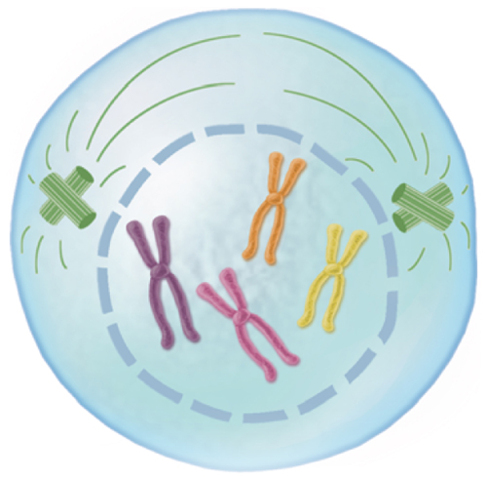

13. Organize Copy and fill in the graphic organizer below to show the results of cell division.


Critical Thinking
14. Predict what might happen to a cell if it were unable to divide by mitosis.
15. Sequence the events that occur during the phases of mitosis.
16. Infer why the chromatin condenses into chromosomes before mitosis begins.
17. Create Use the figure below to create a cartoon that shows a duplicated chromosome separating
into two sister chromatids.

into two sister chromatids.

18. Why is cell division important for multicellular organisms?
Math Skills
Use Percentages
19. The mitotic phase of the human cell cycle takes approximately 1 hour. What percentage of the
24-hour cell cycle is the mitotic phase?
24-hour cell cycle is the mitotic phase?
20. During an interphase lasting 23 hours, the S stage takes an average of 8.0 hours. What percentage
of interphase is taken up by the S stage?
of interphase is taken up by the S stage?
Use the following information to answer questions 21 through 23.
During a 23-hour interphase, the G1 stage takes 11 hours and the S stage takes 8.0 hours.
21. What percentage of interphase is taken up by the G1 and S stages?
22. What percentage of interphase is taken up by the G2 phase?
23. How many hours does the G2 phase last?
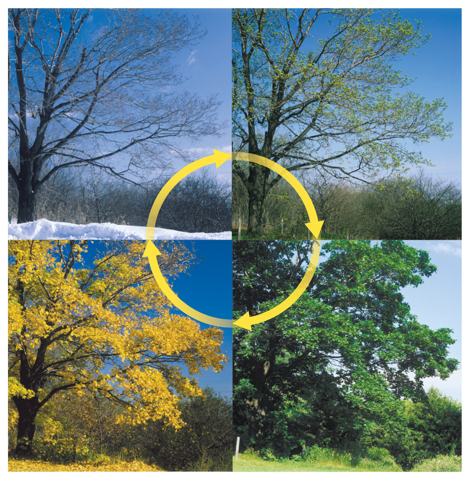
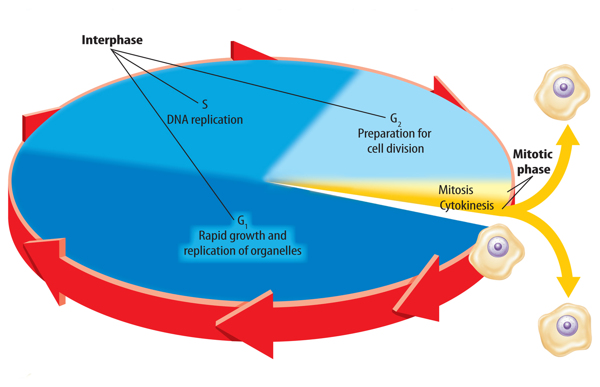

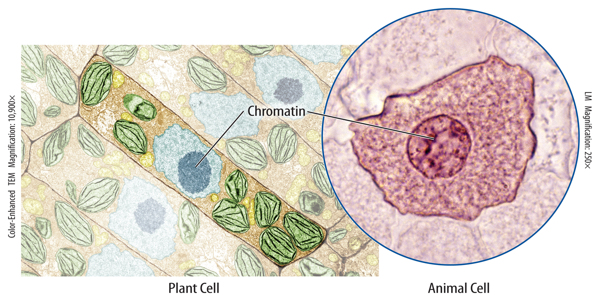
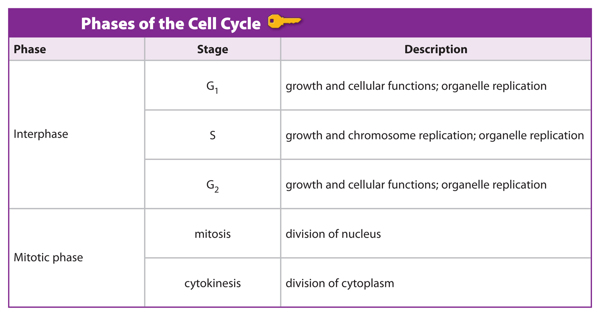
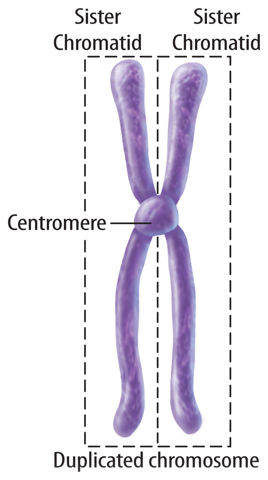
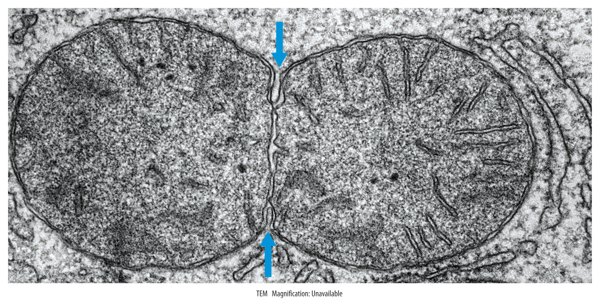
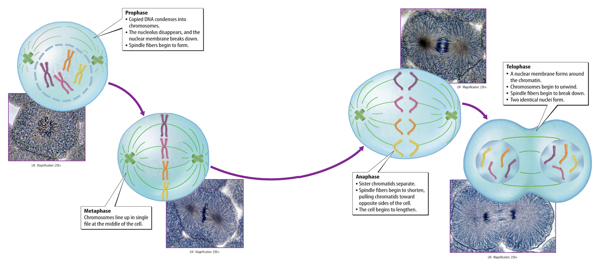
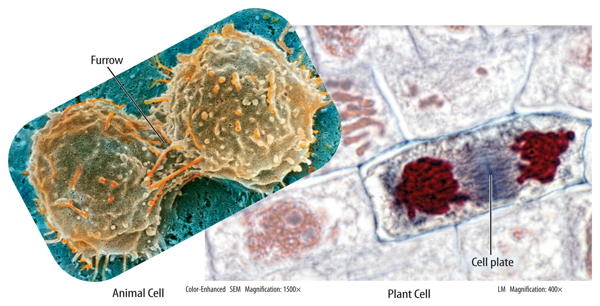
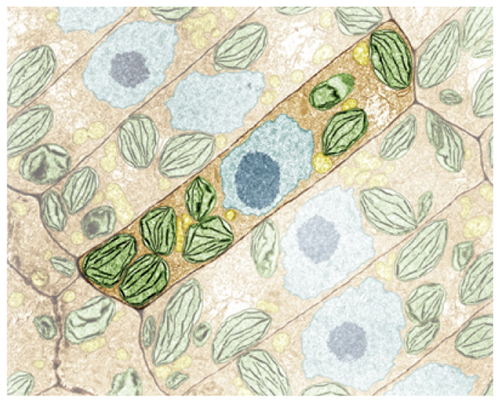
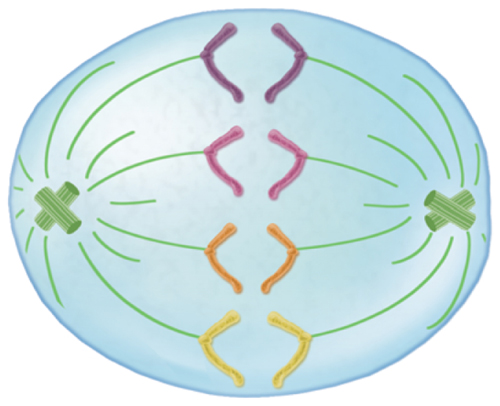
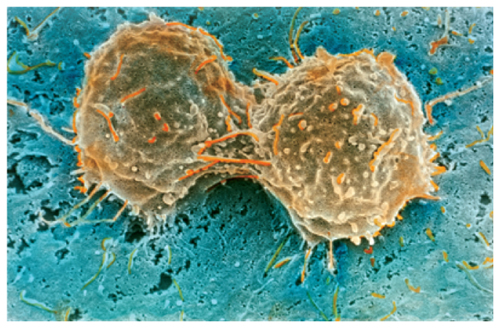
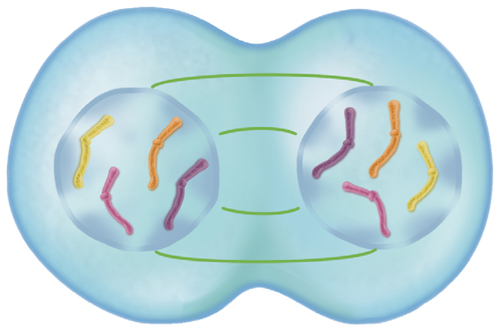
YMCA
ReplyDeleteu copied the book
ReplyDelete